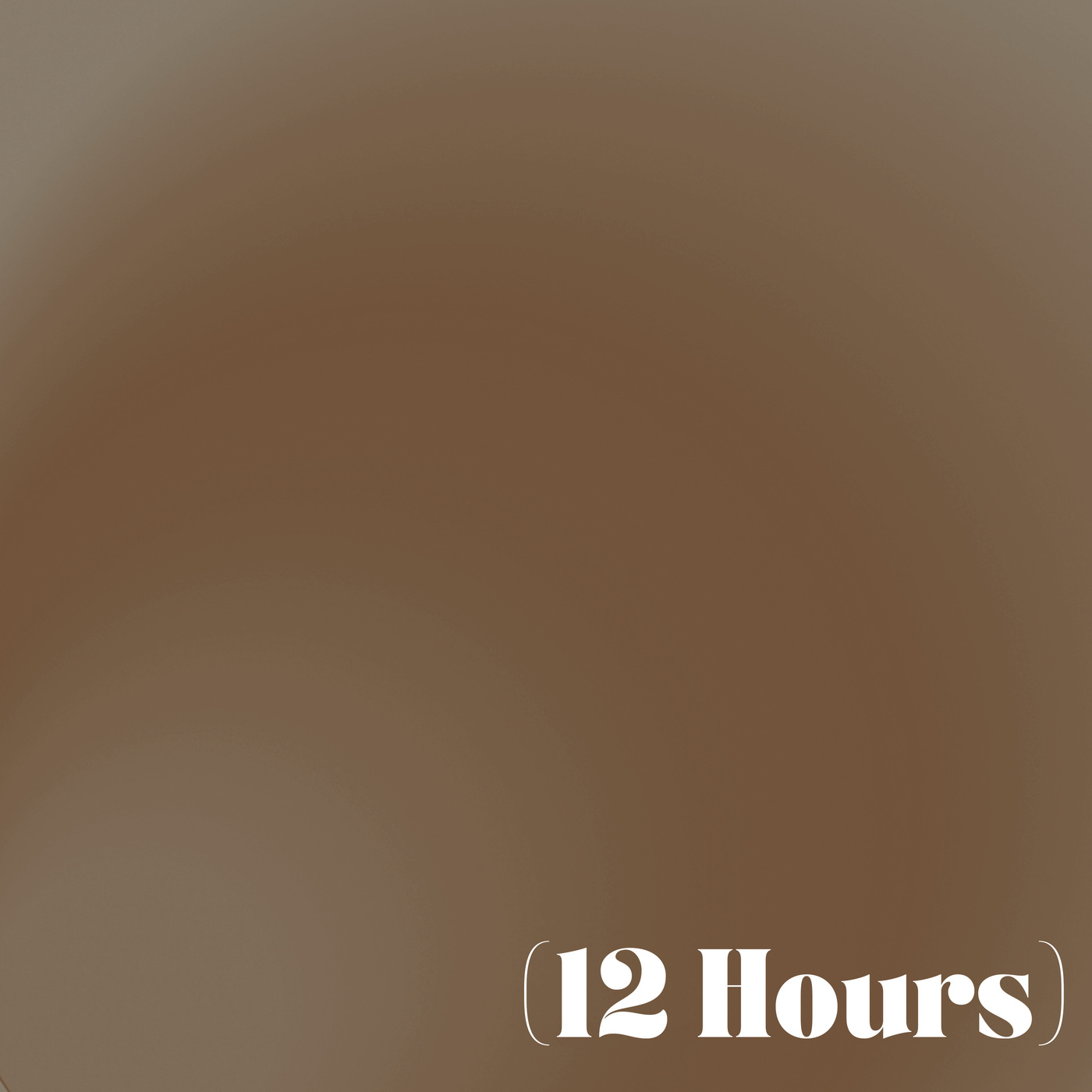Understanding Brown Noise: A Comprehensive Guide

Welcome to a deep dive into the world of brown noise! In this post, we'll explore what brown noise is, how it differs from white and pink noise, and its amazing benefits for sleep, focus, and relaxation. Brown noise, sometimes called red noise, is gaining popularity as a tool to enhance concentration, create a soothing environment, and improve sleep quality. It is particularly useful for those who find the higher frequencies of white noise too harsh or distracting. It's an excellent tool to help block out distractions and unwanted external noise.
This blog post expands on the concepts we discussed in our latest podcast episode, Brown Noise | Sleep Sound (12 Hours). In that episode, we provided 12 hours of continuous brown noise to help you sleep, study, or relax. Here, we'll explore the science behind why brown noise works and how you can effectively use it in your daily life. Let's explore how this unique type of noise can benefit you!
Introduction to Brown Noise
Brown noise, at its core, is a type of sound that emphasizes lower frequencies. Unlike some other forms of sound, it’s characterized by its deep and rumbling nature, resembling sounds like a strong waterfall or a low roar. It gets its name from Brownian motion, which is a random movement of particles, reflecting the random distribution of energy across the sound spectrum. It is also commonly known as red noise.
The appeal of brown noise lies in its ability to mask distracting sounds without being overly stimulating. For many, the gentle, consistent backdrop it provides can significantly enhance focus, relaxation, and even the quality of sleep. Brown noise works to minimize distractions in the environment so you can focus more solely on the task at hand.
What is Brown Noise?
Brown noise is a type of noise characterized by a specific frequency distribution where the energy decreases as the frequency increases. In simpler terms, it emphasizes the lower frequencies while deemphasizing the higher ones. This creates a sound that is often described as deep, warm, and rumbling.
The term "brown noise" is derived from Brownian motion, a physical phenomenon where particles suspended in a fluid move randomly. While the connection between Brownian motion and the sound itself is not direct, the name suggests the random and complex nature of the sound's components.
Listeners often compare brown noise to natural sounds like a waterfall, a strong wind, or the low rumble of thunder. These associations can contribute to its calming and grounding effect, making it a popular choice for creating a peaceful environment.
Brown Noise vs White Noise vs Pink Noise
Understanding the differences between brown, white, and pink noise is crucial to choosing the right sound for your needs. Each type of noise has a unique frequency spectrum and characteristics.
White Noise
White noise contains equal energy across all frequencies, creating a consistent "hissing" sound. It's often compared to the static on a radio or the sound of a running fan. While effective at masking a wide range of sounds, white noise can sometimes be perceived as harsh or overwhelming due to its equal distribution of high frequencies.
Pink Noise
Pink noise is similar to white noise, but it has more energy in the lower frequencies. The power decreases by 3 dB per octave, creating a balanced and natural sound. Many listeners find pink noise more pleasant and less harsh than white noise. Common examples include the sound of rainfall, ocean waves, or a steady breeze.
Brown Noise
As mentioned earlier, brown noise has even more energy in the lower frequencies compared to pink noise. The power decreases by 6 dB per octave, resulting in a deep, rumbling sound. This characteristic makes brown noise particularly effective at masking low-frequency distractions and creating a sense of calm. It is perfect for creating a peaceful and distraction-free environment.
To illustrate, imagine you're in a room with various distractions: a ticking clock, a distant conversation, and the hum of an air conditioner. White noise might mask all these sounds equally, potentially feeling overwhelming. Pink noise would reduce the intensity of the high-pitched ticking while still masking the other noises, offering a more balanced auditory environment. Brown noise would further emphasize the low-frequency hum, effectively drowning out the higher-pitched distractions and creating a deeper, more relaxing soundscape.
The Frequency Spectrum of Brown Noise
The defining characteristic of brown noise is its frequency spectrum, which dictates how energy is distributed across different frequencies. Unlike white noise, which has equal energy across all frequencies, brown noise has a steeper decline in energy as frequency increases.
Specifically, brown noise's power decreases by approximately 6 decibels (dB) per octave. This means that for every doubling of frequency, the sound's intensity decreases significantly. This rapid decrease in higher frequencies is what gives brown noise its deep, rumbling character.
Visually, a frequency spectrum of brown noise would show a curve that starts high on the left (low frequencies) and slopes steeply downwards as you move to the right (high frequencies). This contrasts with white noise, which would appear as a flat line, and pink noise, which would have a gentler downward slope.
Benefits of Brown Noise
The unique properties of brown noise contribute to several potential benefits, particularly in the areas of sleep, focus, and relaxation.
Improved Sleep Quality
One of the primary uses of brown noise is to improve sleep quality. The consistent, low-frequency sound can effectively mask distracting noises, such as traffic, loud neighbors, or snoring. By creating a consistent auditory environment, brown noise helps the brain settle into a state of relaxation, making it easier to fall asleep and stay asleep throughout the night. It's especially effective for those who find the higher-frequency sounds of white noise too harsh or annoying.
Enhanced Focus and Concentration
Brown noise can also be a valuable tool for enhancing focus and concentration. The consistent, calming sound can help block out distractions and create a more focused environment. This is particularly useful for individuals who have trouble concentrating due to ADHD or other attention-related issues. The low rumble of brown noise provides a backdrop that allows the mind to focus on the task at hand without being pulled away by external stimuli. Whether you're soothing a baby or trying to concentrate, brown noise can provide a calming and relaxing atmosphere, helping you focus solely on the task at hand.
Deep Relaxation and Stress Reduction
The deep, soothing sound of brown noise can promote relaxation and reduce stress. The low frequencies can have a grounding effect, helping to calm the nervous system and reduce feelings of anxiety. Many people find that listening to brown noise helps them unwind after a long day or during times of stress. Brown noise creates a peaceful environment to help calm the body and mind.
How to Use Brown Noise for Sleep
Using brown noise for sleep is straightforward. Here are some tips to maximize its effectiveness:
- Choose a reliable source: You can find brown noise tracks on streaming services like Spotify, Apple Music, and YouTube. Alternatively, many sleep apps and noise machines offer brown noise options.
- Set the volume appropriately: The volume should be loud enough to mask distracting noises but not so loud that it becomes disruptive. Experiment to find the right balance for your environment.
- Use a timer: If you prefer not to have brown noise playing all night, set a timer on your device to turn it off after a certain period.
- Experiment with different variations: Some brown noise tracks include subtle variations or additional sounds, such as rain or wind. Experiment to find what works best for you.
- Create a sleep routine: Incorporate brown noise into your bedtime routine to signal to your brain that it's time to sleep.
How to Use Brown Noise for Focus
To use brown noise for focus, follow these tips:
- Select a suitable track: Choose a brown noise track that is consistent and free of sudden changes or jarring sounds.
- Use headphones or speakers: Headphones can be more effective at blocking out distractions, while speakers can create a more natural sound environment.
- Adjust the volume: The volume should be loud enough to mask distractions but not so loud that it becomes distracting itself.
- Take breaks: Periodically take breaks from listening to brown noise to avoid auditory fatigue.
- Combine with other techniques: Consider combining brown noise with other focus-enhancing techniques, such as the Pomodoro Technique or mindfulness meditation.
How to Use Brown Noise for Relaxation
Here's how to use brown noise for relaxation:
- Find a quiet space: Choose a comfortable and quiet environment where you can relax without distractions.
- Select a relaxing track: Opt for a brown noise track that is specifically designed for relaxation, often incorporating gentle variations or nature sounds.
- Set the mood: Dim the lights, light a candle, or use aromatherapy to create a relaxing atmosphere.
- Focus on your breath: Pay attention to your breath and allow yourself to relax into the sound of the brown noise.
- Let go of tension: Consciously release any tension in your body and allow yourself to drift into a state of deep relaxation.
Other Uses of Brown Noise
Beyond sleep, focus, and relaxation, brown noise has several other potential applications.
Tinnitus Masking
Brown noise can be effective at masking the ringing or buzzing sounds associated with tinnitus. The low-frequency rumble can help to distract the brain from the tinnitus symptoms, providing temporary relief.
Soothing Babies and Infants
The consistent sound of brown noise can be soothing for babies and infants, mimicking the sounds they heard in the womb. It can help to calm them, reduce crying, and promote sleep. Brown noise provides a calming and relaxing atmosphere for babies.
Pet Anxiety Relief
Many pets suffer from anxiety due to loud noises, such as fireworks or thunderstorms. Brown noise can help to mask these sounds and create a more calming environment for pets.
Addressing Concerns and Misconceptions
Like any sound therapy, brown noise has its share of misconceptions and concerns. Here are a few to address:
Hearing Damage
Some people worry that prolonged exposure to noise can damage hearing. However, when used at a safe volume, brown noise is unlikely to cause hearing damage. It's essential to keep the volume at a comfortable level and avoid listening for extended periods at high volumes.
Addiction
There's no evidence to suggest that people can become addicted to brown noise. While some individuals may find it helpful and rely on it for sleep or focus, it's not an addictive substance.
Dependency
Some users worry that relying on brown noise may create a dependency, making it difficult to sleep or focus without it. To avoid this, it's essential to use brown noise as a tool to support healthy habits rather than a crutch. Practice good sleep hygiene, mindfulness, and other techniques to promote relaxation and focus.
Enhancing Your Experience with Brown Noise
To maximize the benefits of brown noise, consider these additional tips:
Experiment with Different Sounds
Try different variations of brown noise to find what works best for you. Some tracks include subtle variations or additional sounds, such as rain or wind.
Use Quality Equipment
Invest in quality headphones or speakers to ensure the best possible sound quality. High-quality equipment can deliver a richer, more immersive experience.
Create a Consistent Routine
Incorporate brown noise into your daily routine to signal to your brain that it's time to relax, focus, or sleep. Consistency can help to reinforce the positive effects of brown noise.
Listen Mindfully
Pay attention to how the brown noise affects your body and mind. Notice any changes in your heart rate, breathing, or muscle tension. This can help you to become more aware of the benefits of brown noise and how it can support your well-being.
Conclusion: Embracing the Calm with Brown Noise
Brown noise is a powerful tool for enhancing sleep, focus, and relaxation. Its unique frequency spectrum provides a deep, rumbling sound that can effectively mask distractions and create a calming environment. By understanding the benefits and proper uses of brown noise, you can incorporate it into your daily life to improve your overall well-being.
We hope this blog post has given you a comprehensive understanding of brown noise. Remember to check out our Brown Noise | Sleep Sound (12 Hours) episode for 12 hours of uninterrupted brown noise to help you experience its benefits firsthand. Embrace the calm and discover how brown noise can transform your sleep, focus, and relaxation.






















